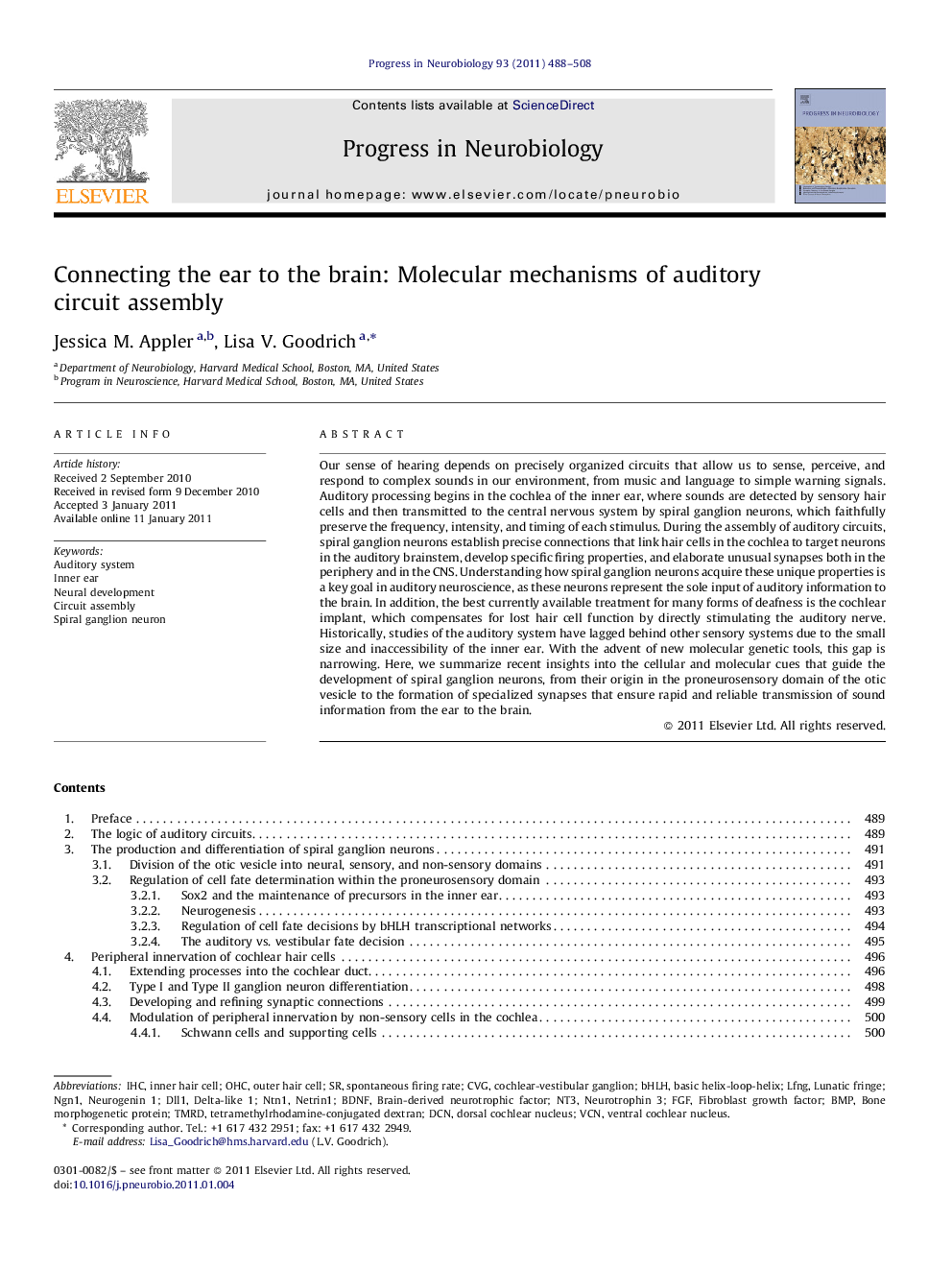| کد مقاله | کد نشریه | سال انتشار | مقاله انگلیسی | نسخه تمام متن |
|---|---|---|---|---|
| 4353563 | 1298475 | 2011 | 21 صفحه PDF | دانلود رایگان |

Our sense of hearing depends on precisely organized circuits that allow us to sense, perceive, and respond to complex sounds in our environment, from music and language to simple warning signals. Auditory processing begins in the cochlea of the inner ear, where sounds are detected by sensory hair cells and then transmitted to the central nervous system by spiral ganglion neurons, which faithfully preserve the frequency, intensity, and timing of each stimulus. During the assembly of auditory circuits, spiral ganglion neurons establish precise connections that link hair cells in the cochlea to target neurons in the auditory brainstem, develop specific firing properties, and elaborate unusual synapses both in the periphery and in the CNS. Understanding how spiral ganglion neurons acquire these unique properties is a key goal in auditory neuroscience, as these neurons represent the sole input of auditory information to the brain. In addition, the best currently available treatment for many forms of deafness is the cochlear implant, which compensates for lost hair cell function by directly stimulating the auditory nerve. Historically, studies of the auditory system have lagged behind other sensory systems due to the small size and inaccessibility of the inner ear. With the advent of new molecular genetic tools, this gap is narrowing. Here, we summarize recent insights into the cellular and molecular cues that guide the development of spiral ganglion neurons, from their origin in the proneurosensory domain of the otic vesicle to the formation of specialized synapses that ensure rapid and reliable transmission of sound information from the ear to the brain.
Research highlights
► Spiral ganglion neurons convey information about sound from hair cells in the inner ear to target neurons in the central auditory system.
► Spiral ganglion neurons are specified through transcriptional networks that operate within the proneurosensory domain of the otic vesicle.
► Spiral ganglion neurons extend peripheral processes to contact hair cells in the cochlea, responding to cues provided by a variety of cells in the environment.
► In the central nervous system, auditory axons form a tonotopic map and establish unusually large synapses that ensure rapid and reliable synaptic transmission.
► A better understanding of spiral ganglion neuron development will aid in the development of stem cell-based therapies and improved cochlear implants for the treatment of sensorineural deafness.
Journal: Progress in Neurobiology - Volume 93, Issue 4, April 2011, Pages 488–508